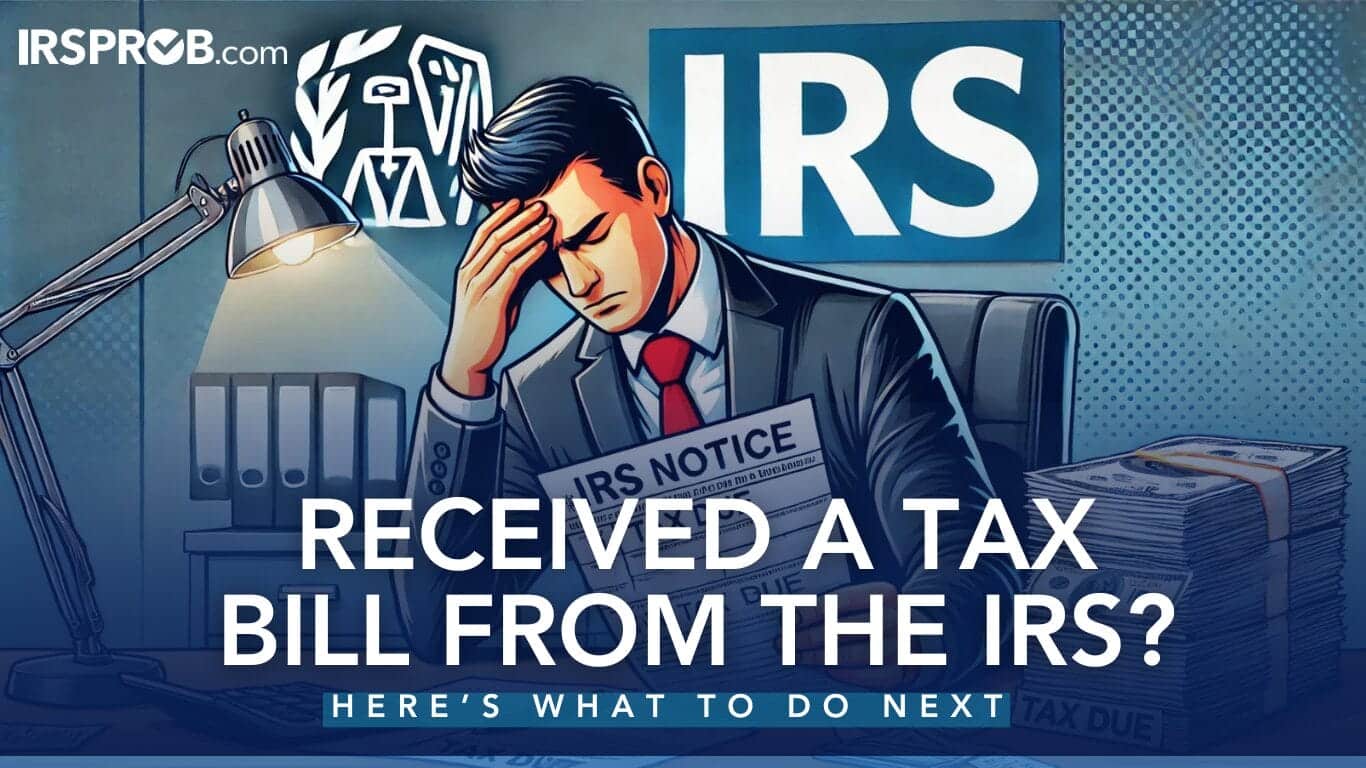
Receiving a tax bill from the IRS can be a daunting experience, especially for business owners already juggling multiple responsibilities. However, understanding the steps to take and knowing your options can alleviate stress and lead to a successful resolution. Here’s a guide on what to do next if you find yourself facing a tax bill from the IRS.
1. Don’t Panic: Understand the Notice
The first step is to carefully read the notice you received. The IRS sends different types of notices, and each one serves a specific purpose. Common notices include:
- CP14: This is the first notice you receive if you owe taxes. It includes the amount you owe and due date.
- CP501: This is a reminder notice if you haven’t paid or responded to the initial bill.
- CP503: A second reminder notice urging you to pay the outstanding amount.
Understanding the specifics of your notice helps you determine the seriousness of the situation and what actions you need to take. The notice will also detail how to proceed if you disagree with the IRS.
2. Verify the Accuracy
Mistakes can happen, and it’s essential to ensure the accuracy of the tax bill. Compare the IRS notice with your tax records and financial statements. Look for discrepancies in reported income, deductions, credits, or payments. If you find any errors, gather supporting documents and contact the IRS to dispute the bill.
In the case of a retired Delta Airlines pilot mentioned in the Tax Resolution Times, failing to file accurate returns led to significant tax debt and penalties. Avoid such situations by ensuring your records are complete and accurate.
3. Consider Payment Options
If the tax bill is correct, the next step is to figure out how to pay it. The IRS offers several payment options:
- Full Payment: If possible, paying the full amount by the due date is the best option to avoid interest and penalties.
- Installment Agreement: If you can’t pay the full amount, you can apply for an installment agreement to pay the tax in monthly installments. You can apply online if you owe $50,000 or less.
- Offer in Compromise: This option allows you to settle your tax debt for less than the full amount you owe, but it is only available if you meet specific criteria and can demonstrate financial hardship.
As highlighted in the Tax Resolution Times, a freelance film producer attempted to evade tax liabilities by using questionable tactics, leading to severe consequences. It’s crucial to pursue legal and transparent methods to resolve tax debts.
4. Communicate with the IRS
Ignoring the IRS notice is not an option. If you need more time to make a payment or have questions about your bill, contact the IRS directly. Explain your situation and discuss potential solutions. The IRS may grant you an extension or offer other forms of relief depending on your circumstances.
5. Consult a Tax Professional
Navigating IRS communications and resolving tax issues can be complex. Consulting with a tax professional or advisor can provide valuable guidance. They can help you understand your options, negotiate with the IRS, and ensure you’re compliant with tax laws.
A tax professional can also help in complex cases like that of David Katz, a compliance officer who faced legal issues for hiding millions from the IRS. Professional advice can help you avoid such pitfalls and address your tax matters effectively.
6. Prevent Future Issues
Once you have resolved your current tax issue, take steps to prevent similar problems in the future. This includes:
- Regularly Reviewing Your Finances: Maintain accurate records and review them periodically to ensure all income, expenses, and deductions are correctly reported.
- Staying Informed: Keep up with tax law changes that may affect your business and personal tax situation.
- Setting Aside Funds: Allocate money throughout the year for tax payments to avoid being caught off guard by a large bill at tax time.
Conclusion
Receiving a tax bill from the IRS can be intimidating, but understanding your notice, verifying its accuracy, and exploring payment options are crucial steps in managing the situation. By communicating with the IRS and seeking professional help when needed, you can navigate the process more effectively and minimize financial stress. Remember, being proactive and informed is your best defense against future tax issues.
If you need assistance dealing with an IRS notice, contact us at IRSProb.com for a confidential consultation. We specialize in helping business owners resolve their tax problems and can guide you through the complexities of dealing with the IRS.







